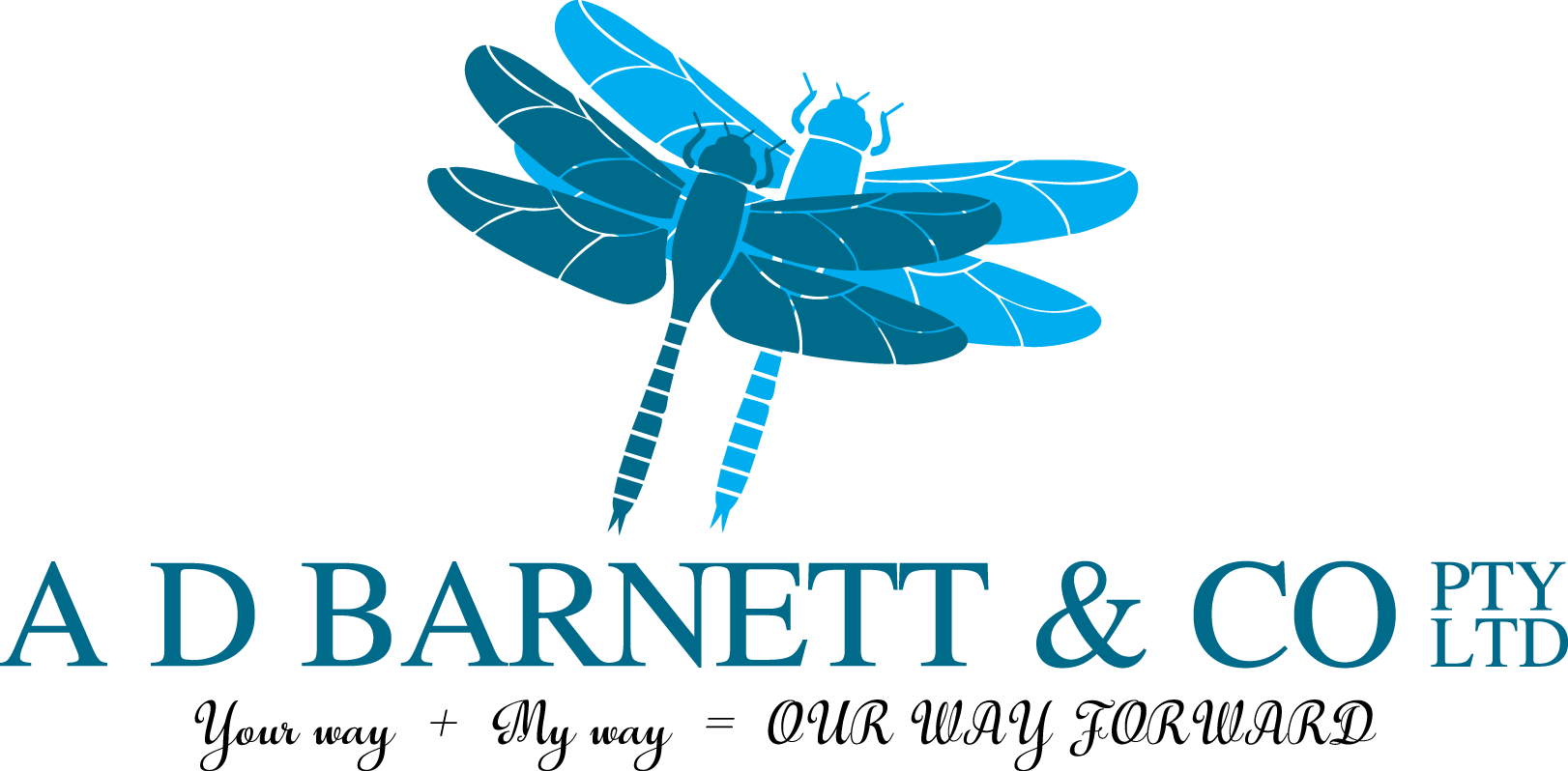|
|
|
|
The 120% deduction for skills training and technology costs
It’s a great headline isn’t it? Spend $100 and get a $120 tax deduction. Days after the Federal Budget announcement that businesses will be able to claim a 120% deduction for expenditure on training and technology costs, we started receiving marketing emails encouraging us to spend now to access the deduction.
But, there are a few problems. Firstly, the announcement is just that, it is not yet law. And, given the Government is in caretaker mode for the Federal election, we do not know the position of the incoming Government on this measure. And, even if the incoming Government is supportive, we are yet to see draft legislation or detail to determine the practical application of the measure.
What was announced?
The 2022-23 Federal Budget announced two ‘Investment Boosts’ available to small businesses with an aggregated annual turnover of less than $50 million.
The Skills and Training Boost is intended to apply to expenditure from Budget night, 29 March 2022 until 30 June 2024. The business, however, will not be able to claim the deduction until the 2023 tax return. That is, for expenditure between 29 March 2022 and 30 June 2022, the boost, the additional 20%, will not be claimable until the 2022-23 tax return, assuming the announced start dates are maintained if and when the legislation passes Parliament.
The Technology Investment Boost is intended to apply to expenditure from Budget night, 29 March 2022 until 30 June 2023.
As with the Skills and Training Boost, the additional 20% deduction for eligible expenditure incurred by 30 June 2022 will be claimed in the 2023 tax return.
The boost for eligible expenditure incurred on or after 1 July 2022 will be included in the income year in which the expenditure is incurred.
Technology Investment Boost
A 120% tax deduction for expenditure incurred by small businesses on business expenses and depreciating assets that support their digital adoption, such as portable payment devices, cyber security systems, or subscriptions to cloud-based services, capped at $100,000 per annum.
We have received a lot of questions about the specific expenditure the boost might apply to, for example does it cover website development or SEO services? But until we see the legislation, nothing is certain.
Skills and Training Boost
A 120% tax deduction for expenditure incurred by small businesses on external training courses provided to employees. External training courses will need to be provided to employees in Australia or online, and delivered by entities registered in Australia.
Some exclusions will apply, such as for in-house or on-the-job training and expenditure on external training courses for persons other than employees.
We are waiting on further details of this initiative to be released to confirm whether there will need to be a nexus between the training program and the current employment activities of the employees undertaking the course. So once again, until we have something more than the announcement, we cannot confirm how the measure will apply in practice or how broad (or otherwise) the definition of skills training is.
What happens if I have already spent money on training and technology in anticipation of the bolstered deduction?
If the measure becomes law, and the start date of the measure remains the same, we expect that any qualifying expenditure incurred in the 2021-22 financial year will be claimed in your tax return. But, the ‘boost’, the extra 20% will not be claimable until the 2022-23 financial year.
If the measure does not come to fruition, you should be able to claim a deduction under normal rules for the actual business expense.
Fuel tax credit changes
The Government temporarily halved the excise and excise equivalent customs duty rates for petrol, diesel and all other petroleum-based products (except aviation fuels) for 6 months from 30 March 2022 until 28 September 2022. This has caused a reduction in fuel tax credit rates.
During this 6 month period, businesses using fuel in heavy vehicles for travelling on public roads won’t be able to claim fuel tax credits for fuel used for this purpose. This is because the road user charge exceeds the excise duty payable, and this reduces the fuel tax credit rate to nil.
You can find the ATO’s updated fuel tax credit rates that apply for the period from 30 March 2022 to 30 June 2022 here. The ATO’s fuel tax credit calculator has been updated to apply the current rates.
Can I claim a tax deduction for my gym membership?
There are lots of reasons to keep fit but very few of them have to do with how we earn our income. As a result, a tax deduction for a gym membership isn’t available to most people. And yes, the Tax Office has heard all the arguments before about how keeping fit reduces sickness and therefore is important to earning an income, and ‘…the way I look is important to my job’.
In general, a tax deduction for fitness expenses is only available if your job requires you to have an extremely high level of fitness. The nexus between how you earn your income and the deduction is about the physical demands and requirements of your specific role. Firefighters are a case in point. A person with what the ATO describes as a “general duties firefighter” role cannot claim a deduction for the money they have spent keeping fit, but a firefighter in a specialist search and rescue operations team for example, trained in a range of specialist skills including structural collapses and tunnel emergencies, and who is tested on fitness and ongoing strenuous physical activity as an essential part of their job, would be able to claim fitness expenses. Similarly, a professional ballet dancer is likely to be able to claim their fitness expenses. A model however, might not be able to claim their expenses as, while they need to look a particular way, their modelling role does not require physical training and exertion (clearly the ATO has not seen some the poses that models have to hold!). So, access to a deduction is about the specialist physical demands and requirements of your role.
A recent case before the administrative appeals tribunal (AAT) explored the boundary of who can claim fitness expenses, confirming that a prison dog handler could claim a deduction for the cost of his gym membership. In this case, the dog handler was responsible for training and maintaining two dogs. He was required to be available to assist in emergencies that might arise. While these emergencies didn’t arise often, the handler had to be prepared for the possibility of an emergency arising at any time. Reaching this decision, the AAT noted the handler:
- Was required to maintain a high degree of anaerobic fitness (including muscle strength sufficient to control a large German shepherd on a lead in a volatile situation);
- Was required to maintain a high degree of aerobic fitness (that is, a degree of speed and agility sufficient to enable him to move effectively with, and control and direct, his dog in an emergency); and
- Must also be prepared to restrain prisoners himself.
While the employer in this case did not specify any particular level of fitness for the dog handler role, the AAT held that a superior level of fitness was implicitly demanded. However, it did not all go the way of the dog handler. His claim for supplement expenses, travel to and from the gym, and gym clothing was denied.
While some commentators have suggested that the floodgates are now open for gym membership claims, as always, the devil is in the detail. To claim a tax deduction for fitness expenses it is generally necessary to be part of a specialist workforce. Police Officers for example cannot generally claim fitness expenses despite the fact that, like the dog
handler in the AAT case, they need to respond quickly to emergencies and may need to subdue people. Unless they are part of a specialist response unit that is required to have a specific, high level of fitness, they are unlikely to be able to claim their gym membership expenses.
So, for the rest of us, gym memberships will continue to be a labour of self-love and care and not an essential part of how we earn our income.
What’s changing on 1 July 2022?
A series of reforms and changes will commence on 1 July 2022. Here’s what is coming up:
For business
Superannuation guarantee increase to 10.5%
The Superannuation Guarantee (SG) rate will rise from 10% to 10.5% on 1 July 2022 and will continue to increase by 0.5% each year until it reaches 12% on 1 July 2025.
If you have employees, what this will mean depends on your employment agreements. If the employment agreement states the employee is paid on a ‘total remuneration’ basis (base plus SG and any other allowances), then their take home pay might be reduced by 0.5%. That is, a greater percentage of their total remuneration will be directed to their superannuation fund. For employees paid a rate plus superannuation, then their take home pay will remain the same and the 0.5% increase will be added to their SG payments.
$450 super guarantee threshold removed
From 1 July 2022, the $450 threshold test will be removed and all employees aged 18 or over will need to be paid superannuation guarantee regardless of how much they earn. It is important to ensure that your payroll system accommodates this change so you do not inadvertently underpay superannuation.
For employees under the age of 18, super guarantee is only paid if the employee works more than 30 hours per week.
Profits of professional services firms
The ATO has been concerned for some time about how many professional services firms are structured – specifically, professional practices such as lawyers, accountants, architects, medical practices, engineers, architects etc., operating through trusts, companies and partnerships of discretionary trusts and how the profits from these practices are being taxed.
New ATO guidance that comes into effect from 1 July 2022, takes a strong stance on structures designed to divert income in a way that results in principal practitioners receiving relatively small amounts of income personally for their work and reducing their taxable income. Where these structures appear to be in place to divert income to create a tax benefit for the professional, Part IVA may apply. Part IVA is an integrity rule which allows the Tax Commissioner to remove any tax benefit received by a taxpayer where they entered into an arrangement in a contrived manner in order to obtain a tax benefit. Significant penalties can also apply when Part IVA is triggered.
A new method of assessing the level of risk associated with profits generated by a professional services firm and how they flow through to individual practitioners and their related parties, will come into effect from 1 July 2022. Professional firms will need to assess their structures to understand their risk rating, and if necessary, either make changes to reduce their risks level or ensure appropriate documentation is in place to justify their position.
Lowering tax instalments for small business – PAYG
PAYG instalments are regular prepayments made during the year of the tax on business and investment income. The actual amount owing is then reconciled at the end of the income year when the tax return is lodged.
Normally, GST and PAYG instalment amounts are adjusted using a GDP adjustment or uplift. For the 2022-23 income year, the Government has set this uplift factor at 2% instead of the 10% that would have applied. The 2% uplift rate will apply to small to medium enterprises eligible to use the relevant instalment methods for instalments for the 2022-23 income year:
- Up to $10 million annual aggregated turnover for GST instalments, and
- $50 million annual aggregated turnover for PAYG instalments
The effect of the change is that small businesses using this PAYG instalment method will have more cash during the year to utilise. However, the actual amount of tax owing on the tax return will not change, just the amount you need to contribute during the year.
Trust distributions to companies
The ATO recently released a draft tax determination dealing specifically with unpaid distributions owed by trusts to corporate beneficiaries. If the amount owed by the trust is deemed to be a loan then it can potentially fall within the scope of the integrity provisions in Division 7A. If certain steps are not taken, such as placing the unpaid amount under a complying loan agreement, these amounts can be treated as deemed unfranked dividends for tax purposes and taxable at the taxpayer’s marginal tax rate. The ATO guidance deals specifically with, and potentially changes, when an unpaid entitlement to trust income will start being treated as a loan depending on the wording of the resolution to pay a distribution. The new guidance applies to trust entitlements arising on or after 1 July 2022.
For you
Home loan guarantee scheme extended
The Home Guarantee Scheme guarantees part of an eligible buyer’s home loan, enabling people to buy a home with a smaller deposit and without the need for lenders mortgage insurance. An additional 25,000 guarantees will be available for eligible first home owners (35,000 per year), and 2,500 additional single parent family home guarantees (5,000 per year).
Your superannuation
Work-test repeal – enabling those under 75 to contribute to super
Currently, a work test applies to superannuation contributions made by people aged 67 or over. In general, the work test requires that you are gainfully employed for at least 40 hours over a 30 day period in the financial year.
From 1 July 2022, the work-test has been scrapped and individuals aged younger than 75 years will be able to make or receive non-concessional (including under the bring-forward rule) or salary sacrifice superannuation contributions without meeting the work test, subject to existing contribution caps.
The work test will still apply to personal deductible contributions.
This change will also see those aged under 75 be able to access the ‘bring forward rule’ if your total superannuation balance allows. The bring forward rule enables you to contribute up to three years’ worth of non-concessional contributions to your super in one year.
Downsizer contributions from age 60
From 1 July 2022, eligible individuals aged 60 years or older can choose to make a ‘downsizer contribution’ into their superannuation of up to $300,000 per person ($600,000 per couple) from the proceeds of selling their home. Currently, you need to be 65 years or older to utilise downsizer contributions.
Downsizer contributions can be made from the sale of your principal residence that you have owned for the past ten or more years. These contributions are excluded from the age test, work test and your total superannuation balance (but not exempt from your transfer balance cap).
First home saver scheme – using super to save for a first home
The First Home Super Saver Scheme enables first home buyers to withdraw voluntary contributions they have made to superannuation and any associated earnings, to put toward the cost of a first home. At present, the maximum amount of voluntary contributions you can make and withdraw is $30,000. From 1 July 2022, the maximum amount will increase to $50,000. The benefit of this scheme is the concessional tax treatment of superannuation.
ATO ramps up heat on directors
Throughout March, the ATO sent letters to directors who are potentially in breach of their obligations to ensure that the company they represent has met its PAYG withholding, superannuation guarantee charge, or GST obligations.
These letters are a warning shot and should not be ignored.
The director penalty regime ensures that directors are personally liable for certain debts of the company if the debts are not actively managed. The liability applies to both current and former directors.
To recover this debt, the ATO will issue a director penalty notice to the individual directors. The ATO can then take action to recover the unpaid amount, including:
- By issuing garnishee notices,
- By offsetting tax credits owed to the director against the penalty, or
- By initiating legal recovery proceedings against the director.
In some cases it is possible for the penalty to be remitted but this depends on when the PAYGW, GST or SGC amounts are reported to the ATO. For example, in some cases the penalty can be remitted if an administrator or small business restructuring practitioner is appointed to the company, or the company begins to be wound up. However, this is normally only possible for PAYGW and GST amounts if they are reported to the ATO within 3 months of the due date. For SGC amounts this is only possible if the unpaid amount is reported by the due date of the SGC statement.
If the unpaid amounts are not reported to the ATO by the relevant deadline then the only way for the penalty to be remitted is for the debt to be paid in full. Winding up the company at this stage will not make the liability of the directors go away.
If you have received a warning letter from the ATO or a director penalty notice then please contact us immediately.





